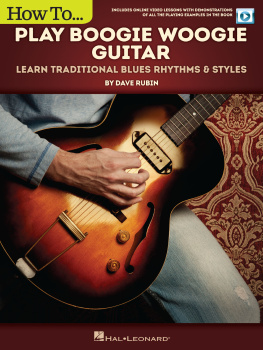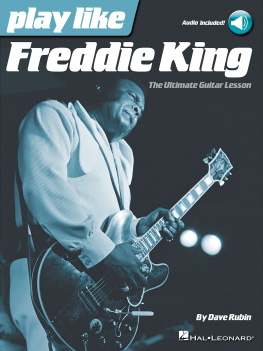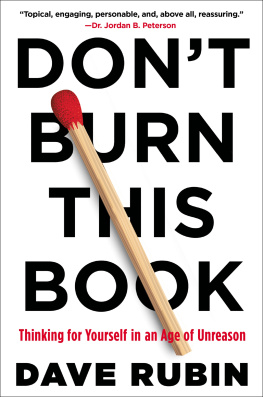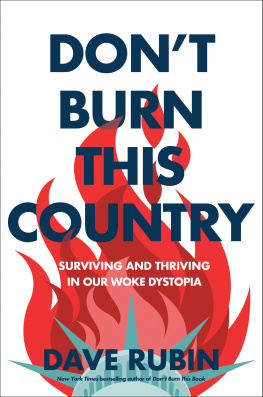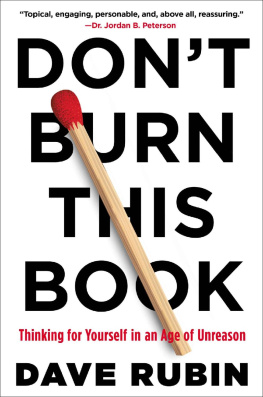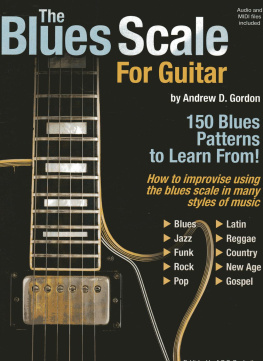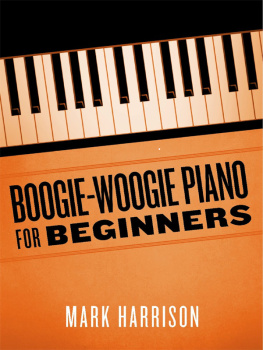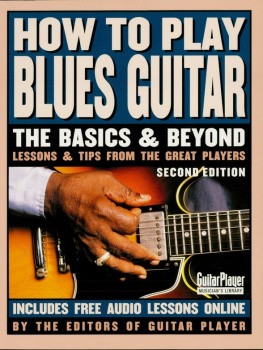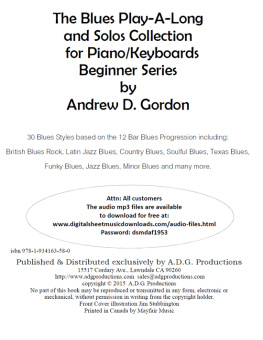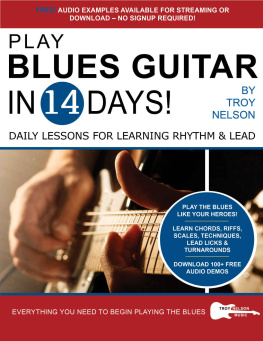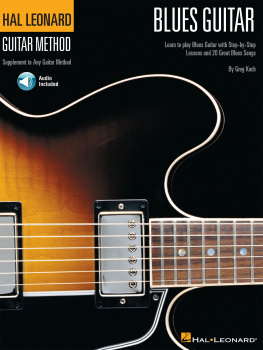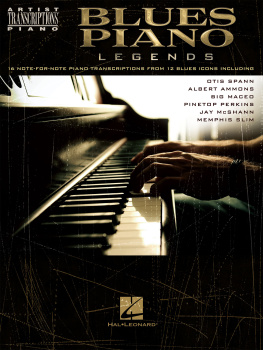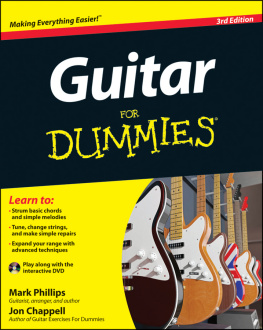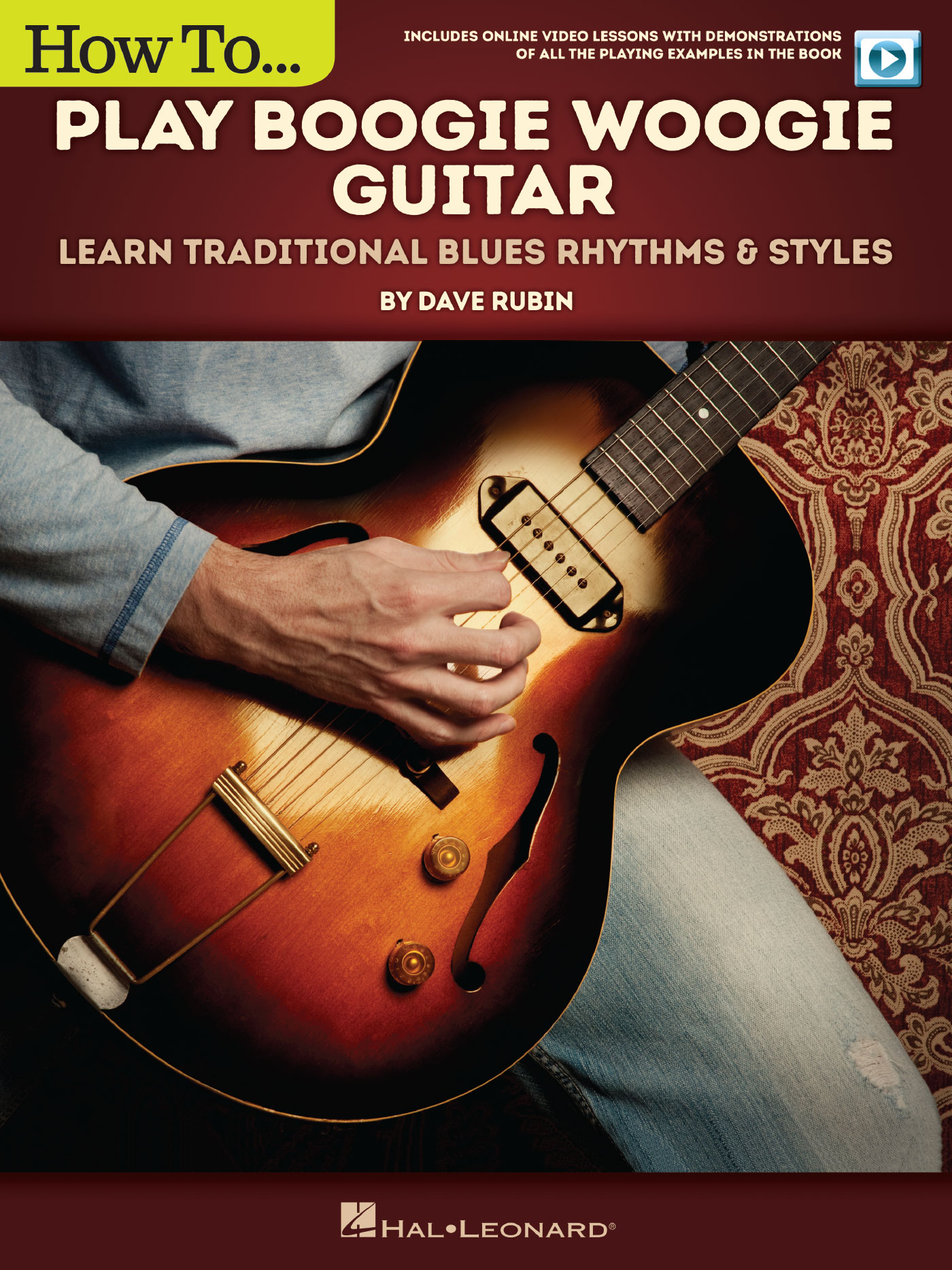7777 W. Bluemound Rd. P.O. Box 13819 Milwaukee, WI 53213
in this publication is an infringement of copyright.
Infringers are liable under the law.
Contents
Chapter 4
Rockin the Boogie
Chapter 5
Improvising Guitar Boogie
I would like to dedicate this book to the memory of Rommie Telfair. Thanks to David Cudaback for his invaluable research and friendship.
Boogie woogie music is one of the greatest influences on the blues, swing jazz, and rock n roll. The style is usually identified more with the piano than the guitar, especially following the prewar and WWII craze as epitomized by Meade Lux Lewis, Pete Johnson, and Albert Ammonsthe literal Big Three masters of the walking 88s. However, boogie woogie actually seems to have originated with guitar players during the latter half of the 19th century in the rough barrel houses of the turpentine and lumber camps of the American South.
Novelist, folklorist, and anthropologist Zora Neale Hurston described it as such:
One guitar was enough for a dance. To have two was considered excellent. Where two were playing, one man played the lead, and the other seconded him. The first player was picking, and the second was framming,that is, playing chords while the lead carried the melody by dexterous finger work. Sometimes a third player was added, and he played a tom-tom effect on the lower strings.
Dexterous finger work indeed! Given the often muscular tempos at which boogie woogie is played, a certain amount of dexterous chops are required. The mission of this book is to provide them and all the necessary aspects of technique and style in order to play this house-rocking guitar music.
The lessons are arranged to lead incrementally and logically from the foundational elements to the last chapter, where the ultimate awaits for guitarists: improvising within a variety of classic boogie woogie accompaniment patterns.
Editors note: Although all of the examples on the video are performed fingerstyle, picking directions are given throughout for those who wish to use a pick instead.
Dave Rubin
NYC
Every music figure in this book includes a matching video with an explanation and demonstration by author Dave Rubin. To access the videos, simply visit www.halleonard.com/mylibrary and enter the code found on page 1 of this book. From here, you can download or stream all of the video files.
The Early Years
The first recorded guitar boogie bass-string patterns appeared on Lead Pencil Blues by Johnny Temple in 1935. A year later, Robert Johnson waxed the landmark guitar boogie blues Sweet Home Chicagoa classic of enormous influence. The boogie patterns appearing in both became known as cut boogie because they involved the 5th and 6th (and sometimes E 7th) degrees of the Mixolydian mode, but not the tonality-defining major 3rd regularly utilized in piano boogie woogie. Im a Steady Rollin Man and Stop Breakin Down, both recorded by Johnson in 1937 in abbreviated cut-boogie form, represent his last examples of the form. In time, blues guitarists would regularly combine the critical E 3rd blues note in conjunction with the major 3rd in bass-string riffs Johnson helped popularize.
Boogie woogie guitar also developed among country musicians. Johnny Barfield recorded the loping Boogie Woogie in 1939 as the first country boogie. He based it on the landmark piano classic Pinetops Boogie Woogie, which was recorded in 1928 but famously heard at Carnegie Hall in 1939 at John Hammond Sr.s genre-busting From Spirituals to Swing concert. Boogie woogie guitar would become a notable subgenre of country music as the pioneering Delmore Brothers, among others, recorded numerous boogies, including Freight Train Boogie and Hillbilly Boogie in 1946 and Mobile Boogie a year later. It should be stated, however, that not all songs with boogie in the title are truly based on boogie woogie techniques.
The 1940s
Hillbilly Boogie, in particular, sounds remarkably like one of the undisputed postwar classics of guitar boogie woogie, the eponymous Guitar Boogie by the underappreciated Arthur Guitar Boogie Smith (19212014). Smith, who played banjo and fiddle as well as guitar, originally recorded and released it to regional success on a small label in 1945, when it was subsequently purchased by a larger label and re-released in 1948. Smith boogied on a Martin D-27 flat-top acousticnot an electric as is often mistakenly thought. The infectious track would go on to make the Billboard Pop chart and the Country chart, where it was the first instrumental to do so, while reputedly selling three million copies worldwide. Though his commercial star would not rise again until 1963, he composed over 500 songs, including Feudin Banjos in 1955, which became the Dueling Banjos theme song in the 1973 movie Deliverance . The resulting copyright infringement case was settled in his favor.
The same year Guitar Boogie was strutting up the pop and country charts, Boogie Chillun (or Chillen) by John Lee Hooker appeared seemingly out of nowhere in a blues paradigm shift. Perhaps only Garfield Akers Cottonfield Blues (1929) bears any previous resemblance at all. It would hit #1 on the R&B charts in 1949 as the first electric blues to do so, sell one million copies, and become the basis of countless blues and rock songs down to the present day, including the similar Bad Dog (1953) by Boogie Bill Webb. Essentially a I-chord vamp, the hard driving, swinging shuffle beat of Boogie Chillun is boogie woogie guitar at its most elemental and powerful.
If anyone could be seen to successfully take off on Hookers example, it would be Dr. Isaiah Ike Ross, the one-man band of boogie and blues. His recording career began in Memphis in 1951 with Boogie Disease (1952), which featured him on vocals, harmonica, and guitar (with an accompanying drummer) and became his signature tune. His Mississippi Blues, originally titled Cat Squirrel (1953), was covered by Cream on their debut, Fresh Cream (1966).

